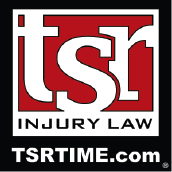Can I Include a Secondary Injury in a Minneapolis Car Crash Claim?

The trauma from a car crash can have a domino effect, as one injury can lead to another. For example, a broken bone could be accompanied by soft-tissue damage and/or a nerve injury. Some secondary injuries can cause significant pain and lengthen your recovery, while others can be life-threatening.
TSR Injury Law discusses secondary injuries from Minneapolis car crashes, including causes, symptoms and steps victims can take to reduce the risk of secondary injuries.
Our firm has decades of experience helping crash victims recover favorable compensation for the damages they suffered. Our services come with no upfront costs and your initial legal consultation is free.
Injured by a negligent driver? Call TSR today: (612) TSR-TIME.
Seeking Compensation For Secondary Injuries From a Car Crash
If you suffered injuries in a car crash, you have the right to seek medical coverage from your own insurance policy, as Minnesota is a no-fault state. If the secondary injury is related, you may also seek compensation from the at-fault person’s coverage. Technically the secondary injury may not have happened in the crash, but the secondary injury would not have occurred unless you suffered the primary injury.
That said, it is critical that you immediately report a secondary injury. This helps to establish a connection between the secondary injury and the crash. Waiting to report the injury gives the insurance company room to dispute how this additional injury happened.
Our Minneapolis car accident lawyers help crash victims seek full compensation for their damages. Call to learn more.
Defining Secondary Injuries
Secondary injuries are a side effect of a primary injury. In other words, the secondary injury would not have happened without the primary injury occurring first.
Often, an injury can be so devastating to the body that it causes further damage. Sometimes the secondary injury shows up right away. However, in some cases, the secondary injury takes days or weeks to show up.
The term secondary injury is not commonly used. Most often, these injuries are simply referred to as complications.
Medical complications are often the result of compensating for an existing or new injury by doing things in a way your body is not used to. For example, crash victims might walk differently or get up from a sitting position in a different way.
A secondary injury could also occur when doctors provide treatment for a primary injury. For instance, you could develop an infection or the surrounding tissues or organs could be damaged. Improperly fitted prosthetics or mobility devices could also cause people to strain themselves and suffer a secondary injury.
Primary vs. Secondary Brain Injuries
While any secondary injury can be dangerous, secondary brain injuries could have fatal complications. An example of a secondary brain injury is one that occurs after an injury to your skull. Initial damage to your skull can often lead to future brain damage.
The primary injury results in immediate damage, such as injury to the blood vessels, cells and tissues in your brain. This can cause further damage over time, particularly if the primary injury is not properly treated. As more brain cells deteriorate, there is a risk of debilitating cognitive issues and possibly death.
Common Examples of Secondary Injuries
There are numerous examples of secondary injuries that may result from a Minnesota car crash. For example, you could suffer a knee injury and eventually develop back problems. This could be because you start moving awkwardly to compensate for your knee injury which puts an unusual strain on your back.
Here are some other examples of secondary car crash injuries:
- Impaired blood flow because of a brain injury
- Structural damage after breaking a bone, such as an injury to ligaments or tendons in one of your joints
- Chronic pain in your leg after suffering a fracture
- Mental health issues after a serious injury that dramatically changes your lifestyle, such as depression, anxiety or difficulty sleeping
- Impaired flow of oxygen throughout the body due to inflammation of your spinal cord
- Infections that develop after an internal injury
- Herniated disc from using your back to lift something instead of your legs
- Pinched nerves that result from pressure from bone fragments
Consequences of Secondary Injuries
Secondary injuries can lengthen the healing process and put you at higher risk for long-term medical issues. For example, you could develop long-term back pain or a brain injury that creates significant cognitive difficulties, such as problems remembering things or focusing on tasks.
Brain damage could also result in painful, chronic headaches that affect your ability to work or maintain personal relationships with family and friends.
Mental health challenges can take a long time to overcome. Even with therapy and medications, victims may still struggle to engage in their lives the same way they did before.
Can You Prevent Secondary Injuries?
Complications/secondary injuries from a car crash may be unavoidable, but sometimes you can take steps to prevent them. For example, seeking immediate medical treatment so doctors can more quickly diagnose the primary injury. This step is vital as it can help you to receive earlier treatment, potentially eliminating the development of a secondary injury.
However, preventing a secondary injury may also depend on how well you follow your doctor’s treatment recommendations. For example, if your doctor tells you to limit physical activity, such as walking, bending down to pick things up, or getting up from a seated position, you need to follow these recommendations. Too much physical activity increases the risk of aggravating your primary injury, puts additional strain on your body, and can lead to the development of secondary injuries.
Symptoms of a Secondary Brain Injury
Another step you should take is informing your doctor about any new symptoms that develop, particularly symptoms that may indicate a secondary brain injury. Some of these symptoms include:
- Headaches of worsening intensity or increased frequency
- Confusion
- Struggling to focus or remember things
- Seizures
- Blurry or double-vision
- Impaired hearing
- Increased sensitivity to sound or light
- Changes in behavior or personality
- Irregular sleep patterns (sleeping more often or struggling to get enough sleep)
- Feeling sick to your stomach
- Extra sensitivity to touch
Contact Us For Legal Assistance Following a Car Crash Injury
Crash victims should get immediate medical treatment to diagnose and stabilize injuries. While this can help prevent the primary injury from getting worse, it could also prevent dangerous secondary injuries.
After seeking treatment, you should consider talking to an experienced lawyer about pursuing compensation for your medical costs and other damages.
TSR Injury Law has helped thousands of Minnesota car crash victims secure compensation. We know how difficult the aftermath of a crash can be and how insurance companies often try to deny and underpay claims. We take these billion-dollar insurance companies head on and secure favorable outcomes for our clients.
TSR Injury Law. Experienced Lawyers. Proven Results. Call (612) TSR-TIME.



